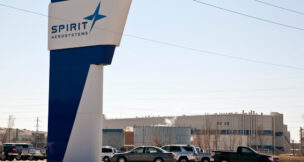Reshoring manufacturing is one of President Donald Trump’s priorities
His vehicle for getting ’er done? A trade war.
Beth JoJack //June 30, 2025//

Phlow Chief Corporate Officer Robby Demeria (left) and CEO Dr. Eric Edwards are spearheading efforts to reshore pharmaceutical manufacturing through a regional industrial hub in Petersburg and Richmond. Photo by Jay Paul

Phlow Chief Corporate Officer Robby Demeria (left) and CEO Dr. Eric Edwards are spearheading efforts to reshore pharmaceutical manufacturing through a regional industrial hub in Petersburg and Richmond. Photo by Jay Paul
Reshoring manufacturing is one of President Donald Trump’s priorities
His vehicle for getting ’er done? A trade war.
Beth JoJack //June 30, 2025//
Summary
- U.S. manufacturing jobs peaked in 1979; automation drove decline.
- Tariffs under Trump renew reshoring talk but raise planning hurdles.
- Virginia pharma cluster grows with companies like Phlow and Civica.
- Chesterfield lands $1B Lego factory, but Southern rivals win more.
- Labor shortages and high costs still challenge U.S. reshoring efforts.
- Public perception, training and new tech seen as keys to revival.
“Jobs and factories will come roaring back into our country,” the president promised in April as he announced a sweeping slate of global tariff hikes.
The real estate magnate isn’t the only one nostalgic for days when high school graduates got hired for factory jobs that paid well enough to support entire families. In a 2024 study commissioned by the Cato Institute, a nonpartisan, Washington, D.C.-based think tank, 80% of respondents believed the country would be better off if more Americans worked in manufacturing.
“There seems to be some emotion around wanting manufacturing jobs to come back,” says Doug Thomas, a business administration professor at the University of Virginia.
That may have something to do with the fact that some workers have struggled more in a post-globalization world than others, according to João-Pedro Ferreira, regional economist with the University of Virginia’s Weldon Cooper Center for Public Service.
With fewer manufacturing jobs available, employees who previously would have worked in factories have instead taken jobs in retail or food service.
“These people are the ones that probably still remember that their parents used to work at a manufacturing factory, and they would be better paid,” says Ferreira.
Wistfulness alone may not be enough to turn the tide.
Manufacturing jobs continue to decline in the United States. After peaking in 1979 with 19.6 million Americans working in manufacturing, U.S. manufacturing jobs fell to 17.3 million by 2000. A quarter century later, about 12.8 million Americans are employed in manufacturing.
While it’s certainly true many companies moved factories overseas in recent decades to take advantage of cheaper overseas labor, offshoring alone isn’t to blame for America’s lost manufacturing jobs. Automation, Thomas stresses, took a heavier toll on labor.
“In real terms, manufacturing output, barring a COVID dip, has continued to rise in the United States,” he says. “It’s not like we’ve stopped manufacturing things. We’ve just done it with fewer people.”
Thomas also thinks it’s “extremely unlikely” that the United States will be able to bring back the number of manufacturing jobs it had in previous decades.
“That stuff has gone away, and it’s going to stay away unless things dramatically change,” agrees Brett Massimino, chair of the department of supply chain management and analytics at Virginia Commonwealth University.
That doesn’t mean policymakers and economic developers should throw in the towel, however. “You could slow the decline,” Thomas says.
No turning back
To talk reshoring, one must address the elephant in the room: Americans are used to paying relatively low prices for goods. And companies can afford to sell goods at lower prices when they pay less for labor.
“Even with things like tariffs that kind of artificially inflate the prices of offshore goods, with the U.S.’s labor rates, it’s going to be really, really tough for companies to bring manufacturing from offshore back to the U.S. and still maintain some level of profitability,” says Massimino.
For manufacturers able to dodge that roadblock, reshoring still isn’t as simple as signing a lease on a vacant facility and slapping a “Help Wanted” sign in the window.
“It takes a while to set it up,” explains Cheryl Druehl, a business professor at George Mason University. “There’s still a lot of effort that goes into making that all happen,”
For one thing, manufacturing operations moving to the United States from overseas must invest in and build machinery and tools to make their goods. Reshoring manufacturers also have to reevaluate their supply chain.
A shirt manufacturer with a factory in Vietnam, for example, likely buys from button or fabric suppliers that are also based in Asia. After reshoring to the United States, those relationships might need to reconsidered. “It is a whole orchestration of the entire supply chain that would have to be redone,” says Druehl.
At the end of the day, the biggest challenge for executives considering reshoring could be meeting workforce needs. In March, there were 449,000 manufacturing job openings in the United States.
“Labor shortages are already the biggest factor manufacturers point to as the key limit on their ability to do business,” says Renee Haltom, Richmond regional executive and vice president of research communications for the Federal Reserve Bank of Richmond. “This is especially true in smaller rural communities where a lot of Virginia manufacturing takes place, and the labor pool just isn’t as deep.”
Part of this is training, but part of the workforce struggle may also be an image problem. Remember that Cato Institute poll? Only 25% of respondents said they’d personally be better off working in manufacturing than in their current jobs.
“People certainly think of manufacturing as heavy, dirty labor,” says Druehl.
Leaders at the Institute for Advanced Learning and Research in Danville are working hard to change that misconception. Once a hotbed for textiles and furniture manufacturing, Danville and its Southern Virginia neighbors took a massive blow from globalization. When factories moved overseas, thousands across the region were left without work.
To help Southern Virginia fight its way back, the General Assembly created the IALR to serve as a catalyst for regional economic development. Among its missions: manufacturing advancement.
A small way IALR chips away at that goal is by giving a constant stream of tours of its manufacturing facilities. Visitors can try on virtual reality welding equipment, watch automated manufacturing equipment in action or observe students in the Accelerated Training in Defense Manufacturing program, a training effort supported by the U.S. Department of Defense that prepares workers for jobs with defense contractors manufacturing parts and equipment for the U.S. military.
While checking out IALR’s manufacturing labs, visitors can see some of the latest technological advancements.
“These are not dark and dirty spaces,” says Telly Tucker, IALR’s president. “These are bright spaces with natural light, white epoxy floors, modern equipment … and that’s what the future of manufacturing looks like.”

Tariff talk
The bevy of tariffs Trump issued since beginning his second term in January could lead more manufacturers to develop factories in the United States, contends Brett Vassey, president and CEO of the Virginia Manufacturers Association.
“Tariffs are the one tool that the United States government, through the executive branch, has at their disposal to force conversations and negotiations around fair trade,” he says.
Robby Demeria, chief corporate affairs officer for Phlow, a Richmond-based company focused on strengthening domestic pharmaceutical manufacturing, also thinks the new tariffs could spur investment, but stresses the tactic should be used carefully. “There is a potential that if you are too aggressive, you could end up driving some manufacturers out of the market,” he says.
Talking to business leaders in recent weeks, Massimino has heard some companies are planning to move operations out of China because of tariffs issued by the Trump administration, but that also doesn’t mean they’re planning to reshore operations to the United States.
“They’re considering somewhere near China that has a significantly lower tariff rate than China,” he says. “So, they’re looking at Vietnam, they’re looking at Taiwan, they’re looking at India.”
Kuntal Bhattacharyya, director of the School of Supply Chain, Logistics and Maritime Operations at Old Dominion University, thinks tariffs could prompt nearshoring — with companies moving manufacturing closer to the United States.
“In Latin American nations, in a country like Mexico,” he says, “you still get a fraction of the labor costs that you have in the U.S., and yet they are close enough that you can get the product in hand within a legitimate time.”
A risk of the trade war, experts warn, is that it could wreck economic confidence.
Since returning to office, Trump has implemented tariffs and backtracked or paused repeatedly, which has led to some critics deploying the insult TACO (an abbreviation for “Trump always chickens out”).
“With all these changes from one week to the next,” says Massimino, “it just makes it really hard for businesses to plan what they want to do.”
AccuTec, a manufacturer of specialty, medical and professional blades in Augusta County, raised prices in response to Trump’s steel tariffs.
“One hundred percent of our material cost is steel, and if somebody increases the cost … we have no choice but to pass that on,” says Rick Gagliano, the company’s president and CEO.
Currently, AccuTec has about 200 employees in Virginia and another 200 in Mexico. Company leaders had discussed reshoring some of the jobs that are currently performed across the border, but that decision, like most of the company’s plans, have been put on ice amid political uncertainty, according to Gagliano.
“I don’t want to spend money reshoring different processes, and then the next administration does something different,” he says.
Factory pharma
When the pandemic hit, it gave America’s leaders a crystal-clear picture of what can happen when a crisis hinders the global supply chain for critical goods, like ventilators or protective medical gear.
“The pandemic showed that supply chains are fragile, and we don’t make anything here at home anymore,” says Scott Maier, CEO of Blue Star NBR, a medical glove manufacturing operation under development in Wytheville that stalled after an expected federal loan didn’t materialize.
In Richmond and Petersburg, a regional effort has been underway since 2020 to establish an advanced pharmaceutical manufacturing cluster that will address the national need for domestic pharmaceutical manufacturers to have a secure supply chain for medical ingredients. Nearly 80% of the manufacturing facilities that produce active pharmaceutical ingredients are located outside the United States, according to a March 2023 staff report from the U.S. Senate’s Committee on Homeland Security and Governmental Affairs.
Dr. Eric Edwards, who co-founded pharma company Kaléo, which produces autoinjectors for allergies and drug overdoses, partnered in 2020 with Frank Gupton, chair of the department of chemical and life science engineering at Virginia Commonwealth University, to launch Phlow, a Richmond-based company that develops and domestically manufactures active pharmaceutical ingredients and finished pharmaceutical products.
“During COVID, we saw a pandemic that truly underscored vulnerabilities of relying on foreign sources for our nation’s most critical medicines,” Edwards said during a June panel discussion about efforts to grow the pharma hub in Richmond and Petersburg.
In 2021, the U.S. Department of Health and Human Services awarded Phlow a four-year, $354 million contract to create a domestic supply chain for essential drugs and pharmaceutical ingredients in short supply. Since then, the contract has been renewed in one-year phases. Phlow’s major partners in the regional pharmaceutical manufacturing effort include Civica and Novo Nordisk.
Phlow is part of the Alliance for Building Better Medicine — a group representing public sector and private pharmaceutical manufacturers and research organizations working to grow the regional advanced pharmaceutical manufacturing cluster and domestic pharmaceutical manufacturing. The alliance was key in getting the U.S. Commerce Department’s Economic Development Administration to designate the Richmond-Petersburg metropolitan statistical area an Advanced Pharmaceutical Manufacturing Tech Hub in 2023.
Today, Phlow has nearly 100 employees.
With two manufacturing plants in Petersburg and an R&D lab in Richmond, the company develops and manufactures active pharmaceutical ingredients for the federal government and the biopharma industry.
“It is not an overnight process or even a quick process when expanding our industrial base here in the U.S.,” Demeria says. “It takes a couple of years to get these facilities up and running.”
Phlow managed to do that during a time when the pandemic upended construction supply chains, making it difficult to source basic goods like lumber.
“The fact that we were able to build these facilities during [what was] probably a generational struggle,” Demeria marvels, “we’re extremely proud of what we’ve been able to do.”
Not toying around
In 2024, businesses manufactured $54.7 billion worth of goods in Virginia, with manufacturing accounting for 7.2% of the state’s gross domestic product, according to the National Association of Manufacturers.
Should the commonwealth make manufacturing a bigger slice of its economic pie?
“A significant part of the job growth we’re competing for as a state is going to come from manufacturing,” says Virginia Economic Development Partnership President and CEO Jason El Koubi. “Manufacturing is also important to … ensuring that each region of the commonwealth participates in the progress of the commonwealth overall.”
Many parts of the state are rural or small metros, notes El Koubi, and, for that reason, “manufacturing is going to be their single largest job growth opportunity.”
These areas typically aren’t regions that are home to large corporate headquarters or have big numbers of workers in business services. “These tend to be communities that are focused on industrial activity,” El Koubi says. “They make things. They move things.”
Virginia has a lot to offer manufacturers, economic developers say.
As far as infrastructure, the commonwealth has the usual highways, airports and railways — but it sweetens the deal by having a major East Coast port with deep water access for larger container ships. The commonwealth’s central East Coast location also is a geographic advantage, providing quick shipping access to major markets.
Virginia is the northernmost right-to-work state where workers can’t be compelled to join a union. In recent years, the commonwealth has also invested heavily in site and workforce development.
Those strengths have motivated several companies to pick Virginia as a site for new factories in recent years.
One of the state’s biggest wins came in 2022 when the Lego Group announced plans to bring a $1 billion manufacturing plant to Chesterfield County, creating more than 1,760 jobs.
Even if it hadn’t scored Lego, though, Chesterfield County would still be one of the state’s manufacturing hotspots, with 241 manufacturers located within its borders.
The county’s success partially stems from the fact that DuPont has operated its Spruance plant there since 1929, according to Garrett Hart, Chesterfield’s economic development director.
“We have a workforce that understands that manufacturing jobs are good jobs because their parents had them and their grandparents had them,” Hart says. Because of that, local leaders and the community as a whole support manufacturing, which has helped the county build a reputation.
“Everybody understands what it takes to take care of manufacturers and to be a good partner for them,” he says. “The word gets out.”
Despite Chesterfield’s good fortunes, Virginia has still been less successful at attracting manufacturers than some of its Southern neighbors. From January 2015 through September 2022, 121 industrial megaprojects were announced in the Southeast. And Virginia won just one: Lego.
States like North Carolina, Georgia and Florida have aggressively wooed these operations.
“They are competitive juggernauts when it comes to manufacturing,” Vassey says. “So, Virginia is going to have to work a lot harder in the future to get those projects.”
For one thing, according to Vassey, other Southern states have kept tight watches on their electricity prices and other business expenses. And Virginia’s corporate income tax rate is 6%, while it’s far less in states like North Carolina, which has a 2.25% rate.
“In a competitive environment, you can’t stand still, or you’re falling behind,” Vassey says.
Moving forward, Virginia and the nation will need to focus on building skilled labor and investing in technological improvements to make up for deficits like labor costs. Labor is often cheaper overseas than in the United States, and some parts of America offer lower costs of living than Virginia does, allowing companies to pay workers less. No getting around that.
“So now the question becomes, ‘How does a community or a state become competitive, or a nation even become competitive, when other countries, states, communities can offer lower wages?’” Tucker asks.
His answer: technology.
“If we can help companies stay more efficient, more effective, more profitable by using new and emerging technologies, then it reduces the likelihood that they will need to cut costs and just run to the next lower-cost labor market,” Tucker says.

















